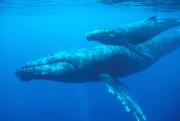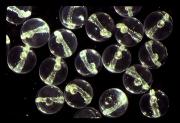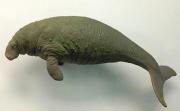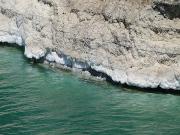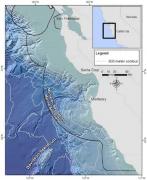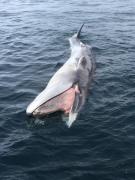Radio Program
Our regular Science and the SeaTM radio program presents marine science topics in an engaging two-minute story format. Our script writers gather ideas for the radio program from the University of Texas Marine Science Institute's researchers and from our very popular college class, Introduction to Oceanography, which we teach to hundreds of non-science majors at The University of Texas at Austin every year. Our radio programs are distributed at to commercial and public radio stations across the country.
Hiding in plain sight isn’t easy. That’s especially true if you’re a fish swimming through the open ocean. There are no coral reefs to hide behind, no kelp beds to provide concealment. So to stay alive, a fish has to find a way to camouflage itself from both predators and prey.
Some do it with different colors. They might be dark on top and light on the bottom, to blend in with the background as seen from above and below. Others can change colors or reflect sunlight.
Like relatives who linger a little too long after the holidays, some species of whales are taking their time about leaving Arctic waters in the fall. And that could set up some unpleasant competition with other species for the goodies in the fridge.
For a young redfish, survival may depend on what its mother ate before spawning. If mama didn’t get enough essential fatty acids, then her offspring might not be able to catch food or get away from predators — even if the young consume a lot of fatty acids after they hatch.
This concept is known as metabolic programming. It says that pre-natal nutrition can have an effect on metabolism after birth. In humans, for example, there appears to be a link between a pregnant mother’s diet and a variety of health problems in children, such as diabetes, heart disease, and obesity.
In the summer of 1741, a Russian expedition was in trouble. Led by Vitus Bering, it had crossed the northern Pacific Ocean from Siberia to Alaska, and was on its way home. But after months at sea, Bering and many of his men were suffering from scurvy. When a storm hit, they were shipwrecked on an island they’d discovered a few months before.
You can barely open a cookbook or watch a show on Food Network these days without being bombarded with the virtues of sea salt. Some chefs think it tastes better than table salt, or they prefer its texture or color. And some even claim that it’s better for you than table salt.
Yet chemically, sea salt and table salt are almost identical. And they have the same origin as well — both come from minerals that settled to the bottom of the ocean or another body of water.
Most of the crabs you find scuttling along the beach are a few inches to perhaps a foot or so across. But they have some relatives off the coast of Japan that are a bit more intimidating. In fact, they’ve been described as “crabzilla.” Spread out, their legs can span 13 feet, and the crabs can weigh up to 40 pounds. Not only does that make them the largest of all crabs, it makes them the largest of all arthropods — a class of creatures that includes everything from crabs and shrimp to scorpions and spiders.
Volcanic mountains dot the west coast of the United States. Some are dormant, some are extinct — and some hide below the surface of the Pacific Ocean.
These underwater mountains are known as seamounts. And the first one ever listed as a seamount lies about 75 miles southwest of Monterey, California. It was discovered in 1933, and a few years later it was named for George Davidson, a leader in exploring America’s Pacific coast.
You could forgive the fin whale if it has an inferiority complex. It’s the second-largest animal on the planet, yet it’s virtually unknown. It’s overshadowed by its bigger cousin, the blue whale. And that’s a shame, because it’s a beautiful and graceful animal.
The fin whale is found around the world, mainly in colder waters. A northern species rings the northern Atlantic and Pacific oceans, while a southern species is found around Antarctica. The northern whales grow up to about 75 feet long, while the southern ones can be about 10 feet longer, and can weigh up to 70 or 80 tons.
It’s been decades since any country exploded a nuclear bomb in the atmosphere. Yet many of the byproducts of those blasts are still with us. And one of them helps scientists track ocean currents.
From 1945 to 1980, the world conducted about 500 nuclear tests in the atmosphere, at sites scattered around the world. Most of those sites were in the northern hemisphere, so much of the radioactive debris fell into northern oceans — especially the North Atlantic.
The foam on a latte, or the foamy meringue on top of a lemon pie, can be a delightful treat. The foam on the ocean? Not so much. It contains some ingredients that you don’t want to eat.
Sea foam is created by strong winds. As the wind blows across the water, it creates waves. When the waves ripple and break, they create bubbles of air. But it’s the material that forms the “skin” of the bubbles that can be so unappetizing.


